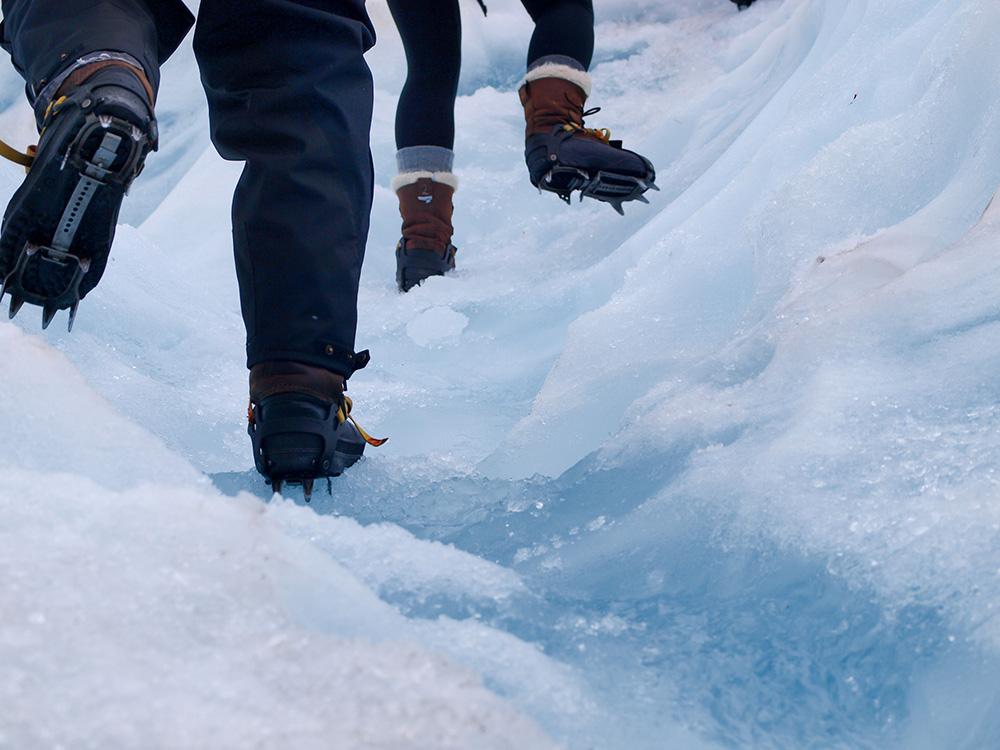If you’ve ever gone on an icy hike, wintertime trek, or cold-climate climb, you might have worn a crampon — though you may not have known it at the time.
Crampons are the spiked traction devices that are strapped to the bottom of boots or hiking shoes ahead of slippery — and therefore perilous — hikes in sub-zero climes. And while these potential life-savers are ubiquitous (and essential) for modern-day cold-weather adventure-seekers, they have a long and storied history, as well.
In the 16th century, European hunters developed four-point “forefoot grappettes” to improve traction during wintertime hunts. Full-foot crampons emerged in the late 19th century, but quickly fell out of favour due to the popularity of nailed boots, which had spikes built right into their soles.

Modern crampons are essential for polar hikes and icy treks.
In 1908, Oscar Eckenstein — an English climber and bouldering pioneer — designed what is generally considered the prototype for the modern-day crampon. Eckstein worked with a blacksmith to design a steel device with 10 long, sharp spikes that was light enough for use by even casual climbers (at the time, mountain trekking was gaining in popularity as a leisure activity). The result was a device that could be attached to regular hiking boots that allowed the user to more easily — and quite literally — walk up mountains whereas, at the time, climbers were doing the arduous work of cutting steps in ice as they attempted to make their summits.
Eckenstein’s crampon designs were innovative at the time, but compared to modern devices, they appear large and cumbersome. A year after Eckenstein’s pioneering crampons hit the market, Italian blacksmith Henry Grivel helped Eckenstein make the product commercially available; two decades after that, Grivel’s son, Laurent, added two front spikes to Eckenstein’s design. The 12-point crampon proved its efficacy in 1938 when, on the first ascent of the Eigernordwand, German climbers Anderl Heckmair and Ludwig Vörg — wearing 12-point crampons — overtook a pair of Austrian climbers wearing nailed boots and 10-point crampons, respectively.
Since then, innovations in manufacturing and sporting materials have seen crampons become lighter, more flexible, and more durable. Grivel — the company founded by Henry in the early 20th century — continues to manufacture the devices; their crampons have been worn on the world’s three highest peaks: Everest, the K2, and the Kangchenjunga.
Getting there
Join G Adventures on one of our icy active trips, like Trekking in Iceland, or Norwegian Fjord Trekking. We offer a number of tours to suit the active traveller, whether or not cold-weather hikes are your thing. Check out our roster of Active, small group tours here.























